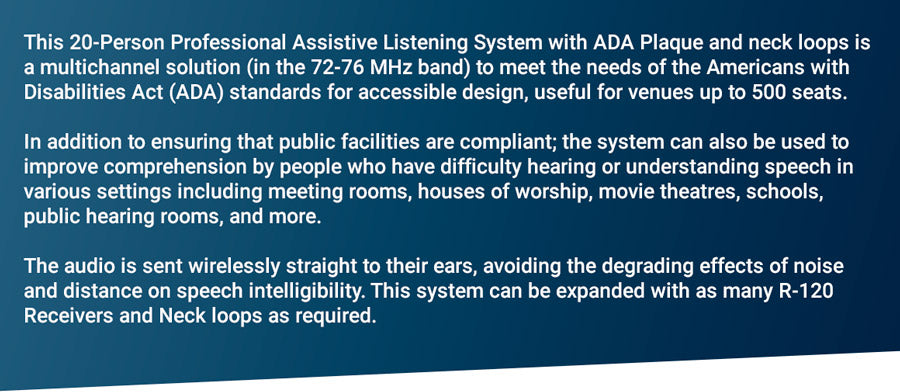20-Person Assistive Listening System with Neckloops and ADA Plaque (Limited Lifetime Warranty)
- Product SKU: ALS-20TP
- Dimensional Shipping Weight: 10.0 lb
- Category: Assistive Listening
Available:
In Stock
$1,945.00
$4,576.50




Our advanced audio solution is engineered to meet diverse communication needs with precision and clarity. Whether you require an assistive listening system for worship or church settings or a robust translation system tailored for church, school, factories, meetings, or worship, this product is designed to excel. It’s optimized to perform flawlessly as a translation system that not only bridges language barriers but also enhances accessibility and engagement in any environment.
Key features include:
- Assistive Listening & Translation: Ideal for both assistive listening for worship and assistive listening for church environments, ensuring every word is heard clearly.
- Versatile Translation Capabilities: Functions effectively as a translation system for church, translation system for school, translation system for factories, translation system for meeting, and translation system for worship.
- Simultaneous Interpretation Excellence: Supports seamless simultaneous interpretation as a complete simultaneous interpretation system and simultaneous translation system, equipped with top-tier simultaneous translation equipment and simultaneous interpretation equipment to deliver accurate simultaneous translation services.
- Enhanced Control & Mobility: Features a translation system with interpreter monitor for real-time oversight, plus offers mobility through wireless translation equipment for churches, interpreter equipment portable, portable translation equipment, and a portable simultaneous interpretation system.



















































